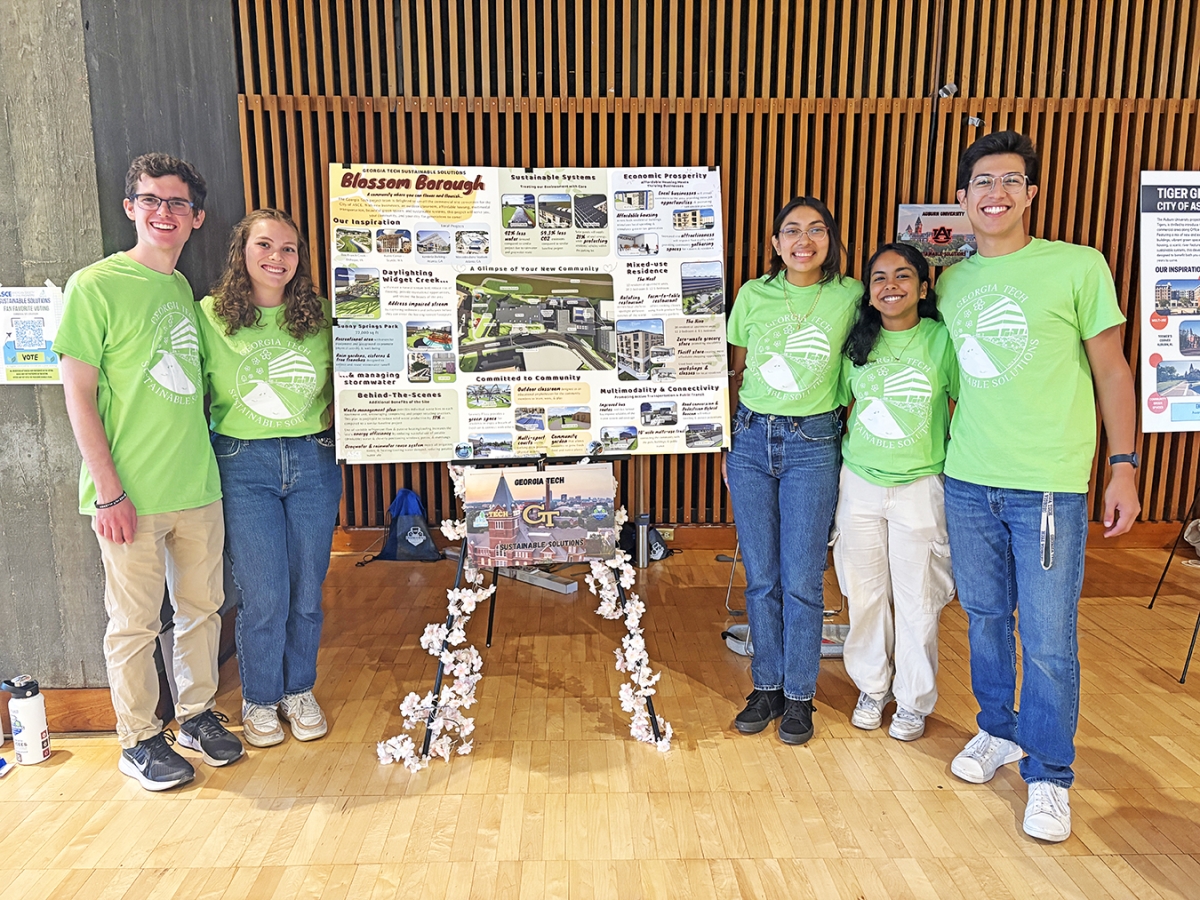
Nate Miller, Phoebe Ellis, Nayzet Pena, Sowmithra Muthulakshmi Prakash and Joaquin Meugniot-Valencia with the display for their project Blossom Borough at the ASCE Student Championship at Cal Poly in San Luis Obispo. (Photo courtesy GT-ASCE)
Georgia Tech has won first place at the American Society of Civil Engineers (ASCE) Sustainable Solutions Competition.
The 18-member team, led by captain Phoebe Ellis, overcame competition from 22 teams from the United States, India and China to defend their title at the ASCE Civil Engineering Student Championships at California Polytechnic State University, San Luis Obispo June 27-29.
“Winning this national competition three years in a row is an incredible feat,” said School Chair Don Webster. “I’m proud of our students’ hard work and how well they represent Georgia Tech’s emphasis on sustainability.”
The Sustainable Solutions Competition challenges students to develop a strong understanding of sustainability and to incorporate sustainability into everyday engineering problems in creative ways.
“I think the thing that made us so successful was how our team has a mix of older members with lots of technical knowledge and experience as well as new members with new ideas and excitement,” said Ellis, a third-year civil engineering major. “It really allowed us to succeed and create a well-thought out and unique site.”
For this year’s competition, teams were tasked with a commercial site conversion: revitalizing an old office building and the surrounding area with specific attention to power supply, sanitation and recycling, traffic and transportation, and stormwater management.
The team’s winning proposal, Blossom Borough, proposed commercial conversion of the site into a community “where citizens can flower and flourish.” According to Ellis, the team took inspiration from local Atlanta projects like the Kendeda Building, Peter’s Parking Deck, Rodney Cook Sr. Park, and the Mercedes Benz Stadium.
At the ASCE Civil Engineering Student Championships, each of the competing teams’ projects was a regional winner, so the competition was stiff.
Key design elements that Ellis feels helped Georgia Tech’s project stand out were “daylighting” a creek—opening up and restoring a previously buried watercourse— and emphasizing multimodality with new facilities, expanded bus routes, and safety features throughout the site.
“The creek was not only a focal point of our site, it also rehabilitated the impaired creek and mitigates stormwater in extreme weather events,” Ellis said.
The team also emphasized stakeholder engagement by including fun elements in the design such as a zero-waste grocery store, an amphitheater, a rotating restaurant, community gardens and a multi-sport court on the parking deck.
“I continue to be impressed by our Georgia Tech students,” said Professor of the Practice Fred Meyer, who advised the team. “Their hard work, creativity, and teamwork truly stood out and set a high standard earning them the victory and inspiring others along the way.”
